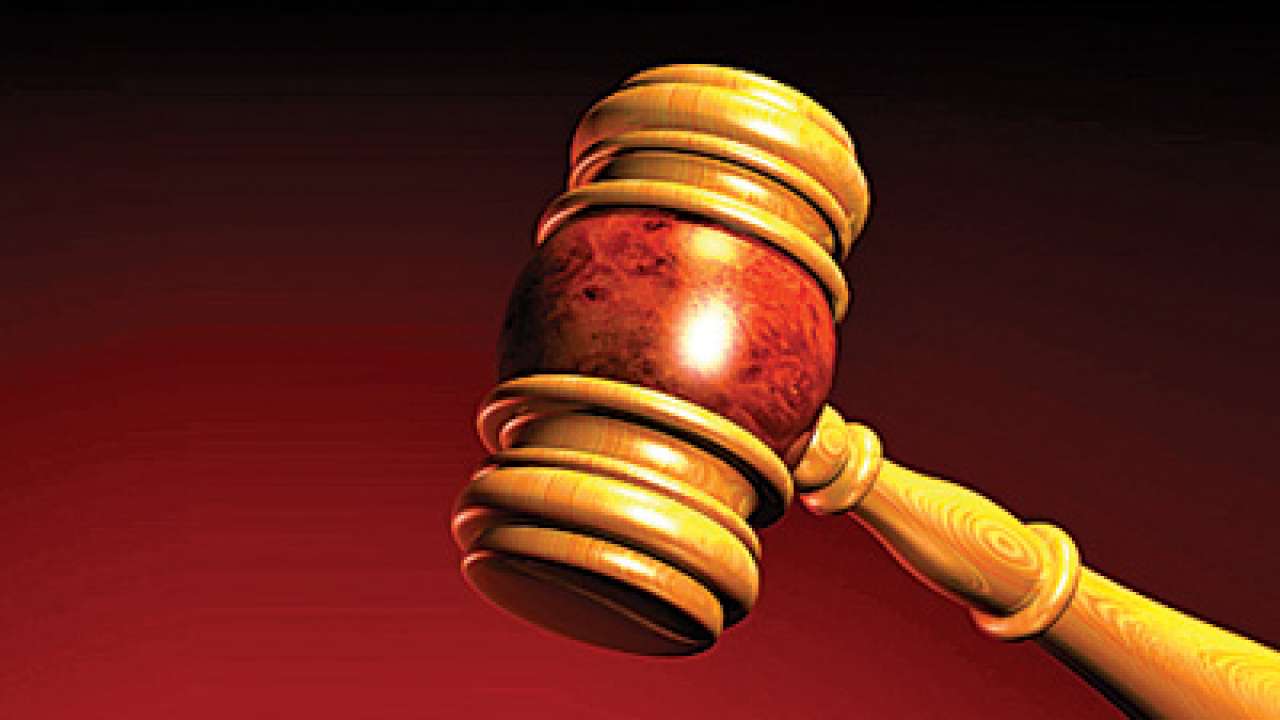
- Select a language for the TTS:
- UK English Female
- UK English Male
- US English Female
- US English Male
- Australian Female
- Australian Male
- Language selected: (auto detect) - EN
Play all audios:
ABSTRACT The San Andreas fault is one of the most extensively studied faults in the world, yet its physical character and deformation mode beneath the relatively shallow
earthquake-generating portion remain largely unconstrained. Tectonic ‘non-volcanic’ tremor, a recently discovered seismic signal1 probably generated by shear slip on the deep extension of
some major faults2,3,4, can provide new insight into the deep fate of such faults, including that of the San Andreas fault near Parkfield, California5. Here I examine continuous seismic data
from mid-2001 to 2008, identifying tremor and decomposing the signal into different families of activity based on the shape and timing of the waveforms at multiple stations6. This approach
allows differentiation between activities from nearby patches of the deep fault and begins to unveil rich and complex patterns of tremor occurrence. I find that tremor exhibits nearly
continuous migration, with the most extensive episodes propagating more than 20 kilometres along fault strike at rates of 15–80 kilometres per hour. This suggests that the San Andreas fault
remains a localized through-going structure, at least to the base of the crust, in this area. Tremor rates and recurrence behaviour changed markedly in the wake of the 2004 magnitude-6.0
Parkfield earthquake6,7, but these changes were far from uniform within the tremor zone, probably reflecting heterogeneous fault properties and static and dynamic stresses decaying away from
the rupture. The systematic recurrence of tremor demonstrated here suggests the potential to monitor detailed time-varying deformation on this portion of the deep San Andreas fault,
deformation which unsteadily loads the shallower zone that last ruptured in the 1857 magnitude-7.9 Fort Tejon earthquake8. Access through your institution Buy or subscribe This is a preview
of subscription content, access via your institution ACCESS OPTIONS Access through your institution Subscribe to this journal Receive 51 print issues and online access $199.00 per year only
$3.90 per issue Learn more Buy this article * Purchase on SpringerLink * Instant access to full article PDF Buy now Prices may be subject to local taxes which are calculated during checkout
ADDITIONAL ACCESS OPTIONS: * Log in * Learn about institutional subscriptions * Read our FAQs * Contact customer support SIMILAR CONTENT BEING VIEWED BY OTHERS LINKING THE SCALING OF TREMOR
AND SLOW SLIP NEAR PARKFIELD, CA Article Open access 03 October 2022 TREMOR ALONG THE DEAD SEA TRANSFORM REMOTELY TRIGGERED BY THE 2023 _M__W_7.6 KAHRAMANMARAŞ EARTHQUAKE Article Open access
28 February 2024 REPEATING EARTHQUAKES AND GROUND DEFORMATION REVEAL THE STRUCTURE AND TRIGGERING MECHANISMS OF THE PERNICANA FAULT, MT. ETNA Article Open access 09 June 2021 REFERENCES *
Obara, K. Nonvolcanic deep tremor associated with subduction in southwest Japan. _Science_ 296, 1679–1681 (2002) Article ADS CAS Google Scholar * Ide, S., Shelly, D. R. & Beroza, G.
C. Mechanism of deep low frequency earthquakes: further evidence that deep non-volcanic tremor is generated by shear slip on the plate interface. _Geophys. Res. Lett._ 34 L03308
10.1029/2006GL028890 (2007) Article ADS Google Scholar * Wech, A. G. & Creager, K. C. Cascadia tremor polarization evidence for plate interface slip. _Geophys. Res. Lett._ 34 L22306
10.1029/2007GL031167 (2007) Article ADS Google Scholar * Shelly, D. R. et al. Precise location of San Andreas fault tremors near Cholame, California using seismometer clusters: slip on
the deep extension of the fault? _Geophys. Res. Lett._ 36 L01303 10.1029/2008GL036367 (2009) Article ADS Google Scholar * Nadeau, R. M. & Dolenc, D. Nonvolcanic tremors deep beneath
the San Andreas fault. _Science_ 307, 389, 10.1126/science.1107142 (2005); published online 9 December 2004. * Shelly, D. R. Possible deep fault slip preceding the 2004 Parkfield earthquake,
inferred from detailed observations of tectonic tremor. _Geophys. Res. Lett._ 36 L17318 10.1029/2009GL039589 (2009) Article ADS Google Scholar * Nadeau, R. M. & Guilhem, A.
Nonvolcanic tremor evolution and the San Simeon and Parkfield, California earthquakes. _Science_ 325, 191–193 (2009) Article ADS CAS Google Scholar * Sieh, K. E. Central California
foreshocks of the great 1857 earthquake. _Bull. Seismol. Soc. Am._ 68, 1731–1749 (1978) Google Scholar * Page, B. M., Coleman, R. G. & Thompson, G. A. Overview: Late Cenozoic tectonics
of the central and southern coast ranges of California. _Geol. Soc. Am. Bull._ 110, 846–876 (1998) Article ADS Google Scholar * Rubinstein, J. L., Shelly, D. R. & Ellsworth, W. L. in
_New Frontiers in Integrated Solid Earth Science, International Year of Planet Earth_ 287–314 (Springer, 10.1007/978-90-481-2737-5_8 2010) Google Scholar * Rogers, G. & Dragert, H.
Episodic tremor and slip on the Cascadia subduction zone: the chatter of silent slip. _Science_ 300, 1942–1943 (2003) Article ADS CAS Google Scholar * Obara, K. & Hirose, H.
Non-volcanic deep low-frequency tremors accompanying slow slips in the southwest Japan subduction zone. _Tectonophysics_ 417, 33–51 (2006) Article ADS Google Scholar * Brudzinski, M. R.
& Allen, R. M. Segmentation in episodic tremor and slip all along Cascadia. _Geology_ 35, 907–910 (2007) Article ADS Google Scholar * Gomberg, J. et al. Widespread triggering on
non-volcanic tremor in California. _Science_ 319, 713 (2008) Article Google Scholar * Peng, Z. et al. Strong tremor near Parkfield, CA excited by the 2002 Denali earthquake. _Geophys. Res.
Lett._ 35 10.1029/2008GL036080 (2008) * Peng, Z., Vidale, J. E., Wech, A., Nadeau, R. M. & Creager, K. M. Remote triggering of tremor around the Parkfield section of the San Andreas
fault. _J. Geophys. Res._ 114 B00A06 10.1029/2008JB006049 (2009) Article ADS Google Scholar * Thomas, A., Nadeau, R. M. & Bürgmann, R. Tremor-tide correlations and near-lithostatic
pore pressure on the deep San Andreas fault. _Nature_ 462, 1048–1051 (2009) Article ADS CAS Google Scholar * Shelly, D. R., Beroza, G. C. & Ide, S. Non-volcanic tremor and low
frequency earthquake swarms. _Nature_ 446, 305–307 (2007) Article ADS CAS Google Scholar * Johnston, M. J. S., Borcherdt, R. D., Linde, A. T. & Gladwin, M. T. Continuous borehole
strain and pore pressure in the near field of the 28 September 2004 M 6.0 Parkfield, California, earthquake: implications for nucleation, fault response, earthquake prediction, and tremor.
_Bull. Seismol. Soc. Am._ 96 10.1785/0120050822 (2006) * Katsumata, A. & Kamaya, N. Low-frequency continuous tremor around the Moho discontinuity away from volcanoes in the southwest
Japan. _Geophys. Res. Lett._ 30 10.1029/2002GL015981 (2003) * Gibbons, S. J. & Ringdal, F. The detection of low magnitude seismic events using array-based waveform correlation. _Geophys.
J. Int._ 165, 149–166 (2006) Article ADS Google Scholar * Shelly, D. R., Beroza, G. C. & Ide, S. Complex evolution of transient slip derived from precise tremor locations in western
Shikoku, Japan. _Geochem. Geophys. Geosyst._ 8 Q10014 10.1029/2007GC001640 (2007) Article ADS Google Scholar * Ozacar, A. A. & Zandt, G. Crustal structure and seismic anisotropy near
the San Andreas fault at Parkfield, California. _Geophys. J. Int._ 178, 1098–1104 (2009) Article ADS Google Scholar * Smith, E. F. & Gomberg, J. A search in strainmeter data for slow
slip associated with triggered and ambient tremor near Parkfield, California. _J. Geophys. Res._ 10.1029/2008JB005848 (in the press) * Agnew, D. C. & Wyatt, F. K. Long-base laser
strainmeters: a review. 〈http://repositories.cdlib.org/sio/techreport/2/〉 (SIO Technical Report, Scripps Institution of Oceanography, 2003) * Kirby, S., Wang, K. & Brocher, T. A possible
deep, long-term source for water in the northern San Andreas fault system: a ghost of Cascadia subduction past? _Eos_ 83, (Fall Meet. Suppl.) abstract S22B–1038 (2002) Google Scholar *
Trehu, A. M. & Wheeler, W. H. Possible evidence for subducted sedimentary materials beneath central California. _Geology_ 15, 254–258 (1987) Article ADS Google Scholar * Sass, J. H.
et al. Thermal regime of the San Andreas fault near Parkfield, California. _J. Geophys. Res._ 102, 27575–27585 (1997) Article ADS Google Scholar * Thurber, C. et al. Three-dimensional
compressional wavespeed model, earthquake relocations, and focal mechanisms for the Parkfield, California, region. _Bull. Seismol. Soc. Am._ 96 S38–S49 10.1785/0120050825 (2006) Article
Google Scholar * Murray, J. & Langbein, J. Slip on the San Andreas fault at Parkfield, California, over two earthquake cycles, and the implications for seismic hazard. _Bull. Seismol.
Soc. Am._ 96 S283–S303 10.1785/0120050820 (2006) Article Google Scholar Download references ACKNOWLEDGEMENTS I thank T. Ryberg and C. Haberland for sharing data from temporary arrays GFZ1,
GFZ2 and GFZ3. G. Fuis assisted with permitting and installation of these stations and instruments were provided by GIPP of GFZ. W. Ellsworth and J. Murphy installed temporary stations at
the Vogel site. I thank R. Nadeau for sharing his tremor catalogue. The HRSN is operated by UC-Berkeley, and seismic data was provided through the NCEDC. I thank J. Vidale, J. Hardebeck and
J. Gomberg for reviewing various forms of this manuscript. AUTHOR INFORMATION AUTHORS AND AFFILIATIONS * US Geological Survey, 345 Middlefield Road, MS 977, Menlo Park, California 94025, USA
, David R. Shelly Authors * David R. Shelly View author publications You can also search for this author inPubMed Google Scholar CORRESPONDING AUTHOR Correspondence to David R. Shelly.
ETHICS DECLARATIONS COMPETING INTERESTS The author declares no competing financial interests. SUPPLEMENTARY INFORMATION SUPPLEMENTARY INFORMATION This file contains Supplementary Figures
S1-S6 with Legends and Supplementary Table S1. (PDF 1249 kb) POWERPOINT SLIDES POWERPOINT SLIDE FOR FIG. 1 POWERPOINT SLIDE FOR FIG. 2 POWERPOINT SLIDE FOR FIG. 3 POWERPOINT SLIDE FOR FIG. 4
RIGHTS AND PERMISSIONS Reprints and permissions ABOUT THIS ARTICLE CITE THIS ARTICLE Shelly, D. Migrating tremors illuminate complex deformation beneath the seismogenic San Andreas fault.
_Nature_ 463, 648–652 (2010). https://doi.org/10.1038/nature08755 Download citation * Received: 29 July 2009 * Accepted: 07 December 2009 * Issue Date: 04 February 2010 * DOI:
https://doi.org/10.1038/nature08755 SHARE THIS ARTICLE Anyone you share the following link with will be able to read this content: Get shareable link Sorry, a shareable link is not currently
available for this article. Copy to clipboard Provided by the Springer Nature SharedIt content-sharing initiative









